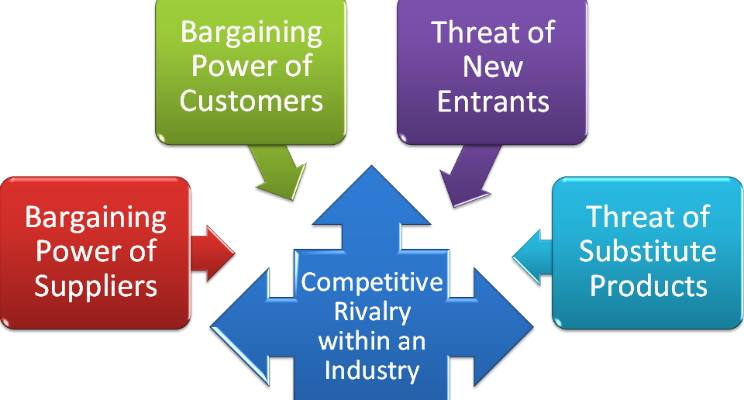
Michael Porter, a well-known Harvard Strategy professor, developed a tool called “Porter’s 5 forces” to help structure the analysis of market attractiveness. In Porter’s own words, “The essence of strategy formulation is coping with competition”. With this idea in mind, it’s intuitive that a deeper understanding of the competitive forces within your market, helps you to make better choices about how you position yourself, and to identify levers where you can influence the amount of leverage that customers and suppliers have over your organization.
Sometimes influence comes simply by changing your offering to generate competitive advantage, and in other cases it may act as impetus for actions like horizontal or vertical integration, lobbying for advantage with regulators, etc. This tool has been used since it was originally publicized in the Harvard Business Review in 1979. It’s important to go further than simply talking about the forces, it’s important to create some form of rating in order to generate consensus building discussion.
The tool is used by discussing and rating each of five dimensions of the market:
1. New Entrant Risk: The ease with which new competitors can enter the market (if they see that you are growing and profitable then drive your prices down).
2. Buyer Power: The power of your customers to drive down your prices.
3. Threat of substitution: The extent to which different products and services can be used in place of your own. (this also drops both supplier power and the market attractiveness)
4. Supplier Power: The power of suppliers to drive up the prices of your inputs.
5. Competitive Rivalry: The strength of competition in the industry.
In Porter’s words:
“In the fight for market share, competition is not manifested only in the other players. Rather, competition in an industry is rooted in its underlying economics, and competitive forces exist that go well beyond the established combatants in a particular industry. Customers, suppliers, potential entrants, and substitute products are all competitors that may be more or less prominent or active depending on the industry."
Collectively, these forces determine the dynamics and degree of competition in your market, and therefore the potential profitability. Just like with many good strategy tools, it's fairly simple to use, and creates clarity and common language around a critical topic. When you begin to understand this more clearly, you can begin to influence it in your favour in a more concerted way.
--
About the Author
Kirk Leverington is an 20-year veteran of the credit union system and a long-term corporate strategy manager. Combining a belief in challenging leaders to think strategically with an expert understanding of systematic approaches to implementation, Kirk has played an integral role over the years in supporting organizational change.
He has a Master’s degree in Business Administration from Royal Roads University, specializing in management consulting. Additionally, he is a Certified Management Consultant. Before starting his consulting practice at Lucid Strategy Group, Inc. in San Francisco, Kirk was the Senior Manager of National Consulting at Credit Union Central of Saskatchewan.
A version of this post was first published here.
